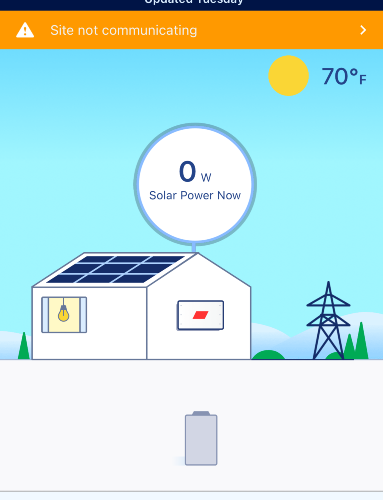SPAN-PG&E "Save" Program - First Impressions
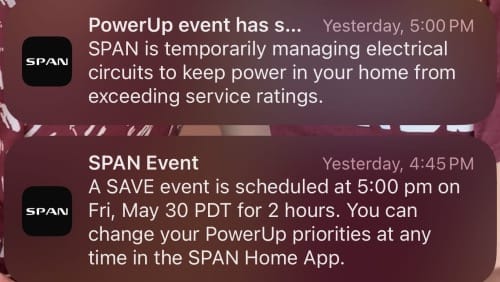
Using an electric panel as a VPP is clunky
I wrote in April about a couple of Virtual Power Plant (VPP) trials taking place in the Bay Area, and last night I had the first opportunity to participate in a demand response “event” - via SPAN’s PG&E “SAVE” program.
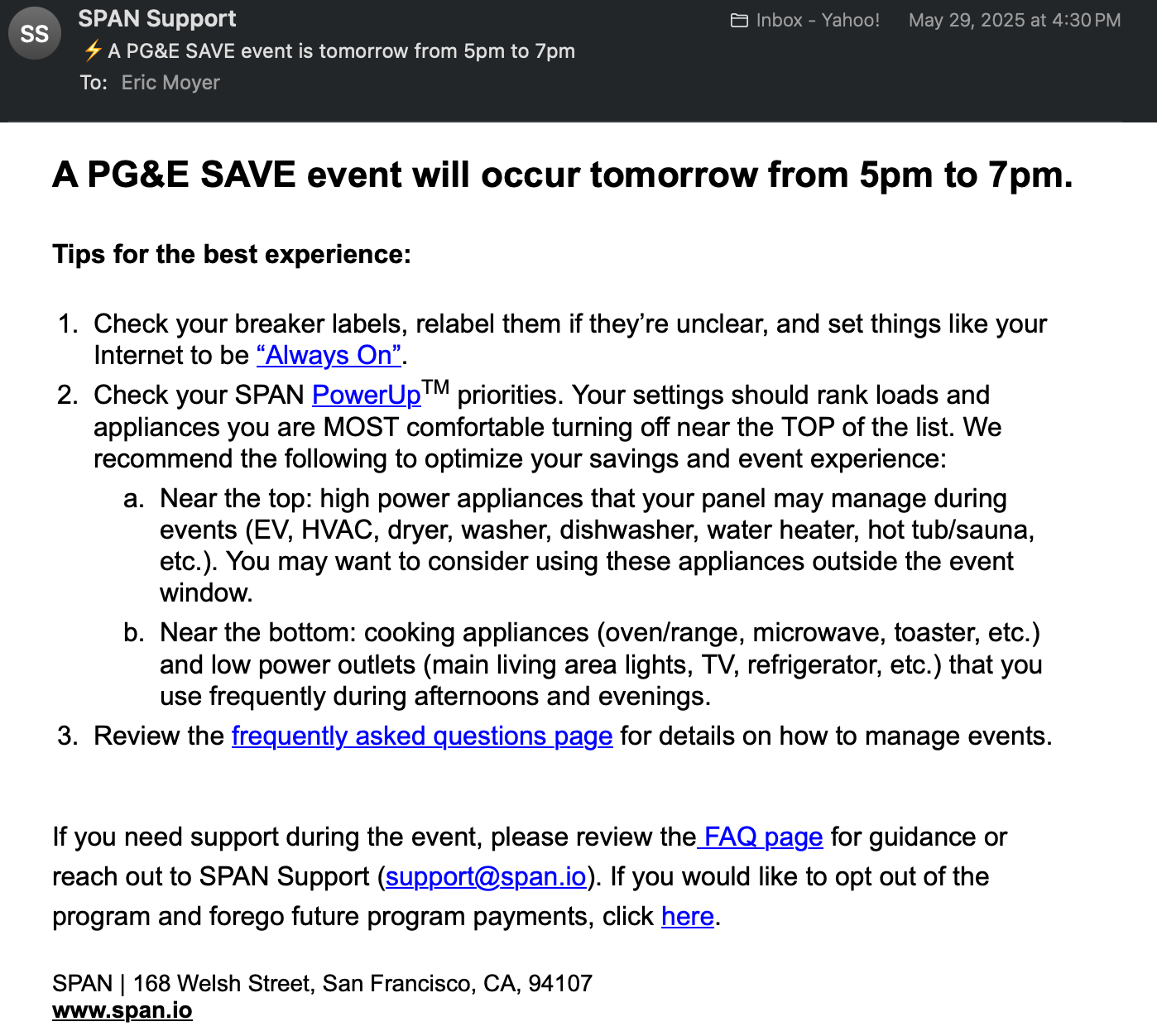
In advance of the event, I prioritized the circuits in Span’s “Power Up” interface, with the circuits most open to curtailment at the top of the list:
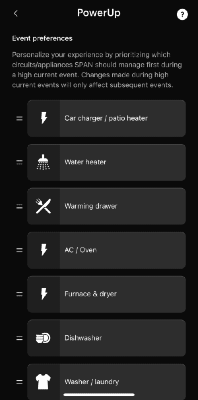
Event was scheduled to take place from 5-7pm. It was a hot day and we were away from the house at the start, so the largest electric load was the AC. It was sunny, the solar panels were producing about 4.5kW of power, and the 16kWh battery was almost fully charged.
At 5pm, the Span system decided to limit our energy consumption by toggling the AC outdoor unit on and off in cycles - 5 to 20 minutes off, 15 seconds on. It did this until we got home around 6pm, and I shut off the AC. At that point household consumption was under 1kW, grid export was about 2kW and the Span system took no further action.
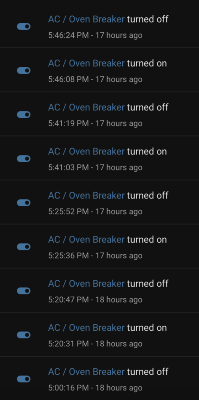
It seems to me that toggling off and on an AC outdoor unit by cutting power on the circuit in this way could be really bad - I can’t imagine firing up an AC compressor for 15 seconds at a time is good for it. Further, if my unit had been a more complex inverter heat pump, I could imagine this toggling might even fry something (it’s a simple 1-stage AC unit, so not an issue in my case). Typically electric company demand response systems are more purposefully integrated into an HVAC system, either through a hard-wired utility system (such as this) or through smart thermostat control (such as how OhmConnect / Nest and now Renew Home implement HVAC controls).
What impact did this likely have to the electric grid?
In terms of benefits to the electric grid, Span’s curtailment of my electric usage resulted in an increase in solar export of about +3kW at 5pm, slowly declining as the sun set. But my 16kWh battery was just sitting there fully charged - as Span’s program was not able or didn’t plan to consider the storage aspects available to the grid, even though my solar, storage and Span panel are networked together.
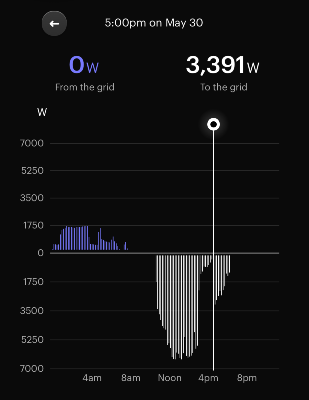
A more useful demand response management approach could have been to began discharging the battery at a 5kW rate - this would have resulted in more benefit to the grid with zero impact on my own AC usage.
Alternately, a combination of battery discharge coupled with modest thermostatic setback of the AC could produce even greater benefits with less consumer impact.
Span SAVE program - my conclusions
It was fun to try out this new Span program - I think there’s a lot of potential for energy savings and both grid and homeowner benefits with flexible demand control. However, I will not be participating further in the current program, as there are too many shortcomings with the current implementation - unnecessary stress on AC system, inability to coordinate with storage and solar, and inconvenient impacts to the household.
I’m now looking forward to see what SolarEdge’s program is like - but first I have to get the SolarEdge communication system working again!
